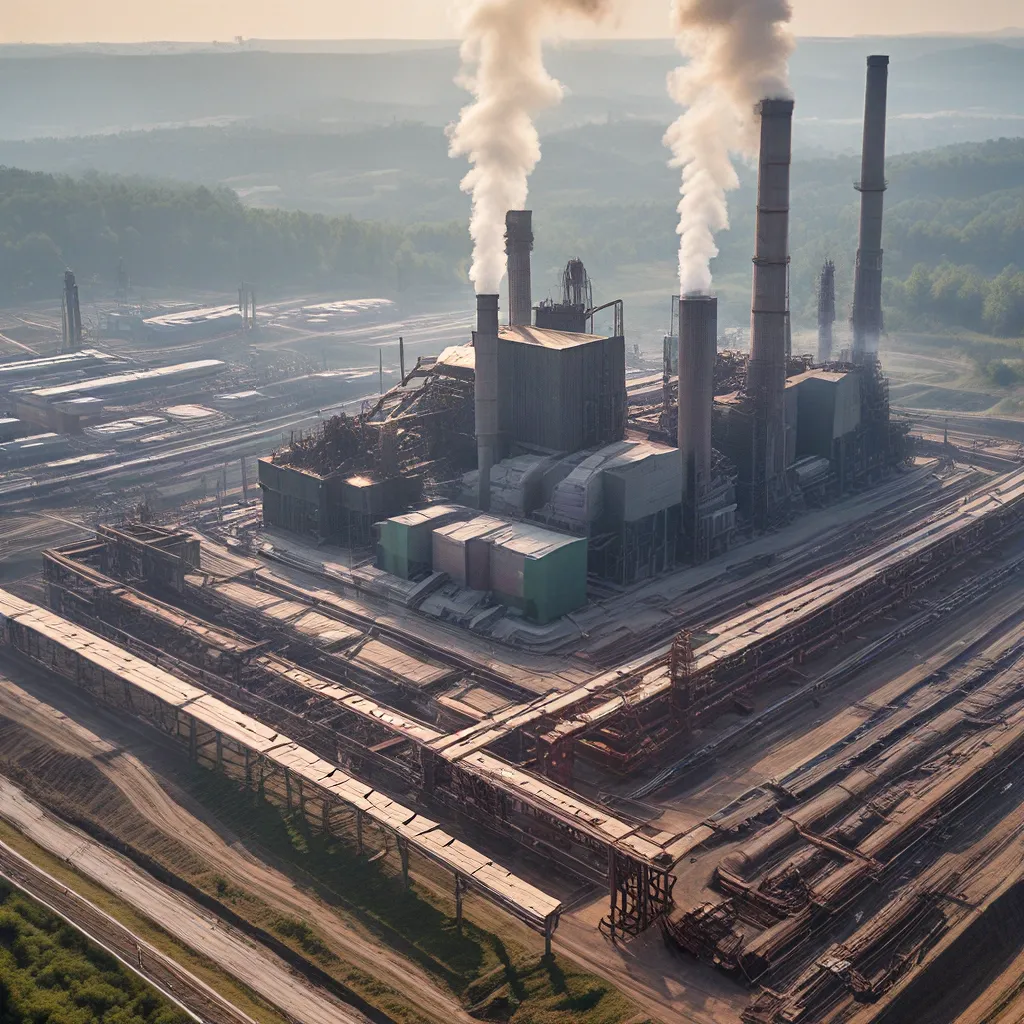
As a sustainability enthusiast, I’ve always been fascinated by the intersection of technology, industry, and environmental consciousness. And when it comes to the construction and infrastructure sectors, the topic of sustainable steelmaking has been a particularly intriguing one for me.
You see, I’ve long believed that the key to building a greener future lies in the materials we use to construct the buildings, roads, and energy systems that power our modern world. And as I delved deeper into this topic, I discovered a fascinating story of innovation, challenges, and the relentless pursuit of sustainability.
The Sustainable Steelmaking Conundrum
Let’s start with the basics. Steel and cement – the two cornerstone materials of the built environment – are responsible for a staggering 23 and 26 billion tonnes of carbon dioxide emissions per year, respectively. That’s a massive environmental footprint, one that’s only set to grow as our cities continue to expand and our infrastructure needs intensify.
The reason for this is the energy-intensive nature of the traditional steelmaking process. Conventional blast furnaces, powered by fossil fuels like coal and coke, generate enormous amounts of heat – upwards of 1,450 degrees Celsius – necessary to extract and purify the iron ore. And as a byproduct, they release vast quantities of CO2 into the atmosphere.
According to PwC, these embodied emissions – the greenhouse gases associated with material production, transportation, and disposal – account for a staggering 80-95% of the total emissions generated by the construction industry.
That’s a sobering statistic, but it also highlights the immense opportunity for sustainable innovation. And let me tell you, the industry is hard at work, exploring a range of cutting-edge technologies and processes to tackle this challenge head-on.
Forging a Greener Future
One of the most promising solutions on the horizon is the transition from traditional blast furnaces to electric arc furnaces. These innovative systems, which rely on electricity rather than fossil fuels, have a significantly lower carbon intensity. In fact, the World Economic Forum predicts that electric arc furnaces could account for 35-40% of global steel production by 2050.
But that’s just the tip of the iceberg. The real game-changers are the emerging hydrogen-based steelmaking and molten oxide electrolysis technologies, which promise to deliver a truly zero-emissions steel production process. These cutting-edge methods require substantial infrastructure changes, including the development of renewable energy pipelines, special-grade iron ore briquettes, and material recycling hubs. But the potential payoff is enormous – a future where steel production is not only sustainable but actively contributes to a cleaner, greener energy infrastructure.
Unlocking the Sustainable Materials Puzzle
Of course, the road to a sustainable steel industry is not without its challenges. As Iberdrola points out, the sheer scale of the transition required is daunting. Decarbonizing the steel and cement sectors will demand massive investments, innovative policy instruments, and a coordinated effort across the entire supply chain.
But I’m a firm believer that where there’s a will, there’s a way. And project owners and developers are rising to the occasion, embracing a comprehensive framework for the sustainable procurement of green building materials.
At the heart of this framework is a robust decarbonization strategy that incorporates green materials and design principles to reduce waste and material usage. By setting specific objectives and timelines for the transition to sustainable procurement, these forward-thinking leaders are driving ambitious emissions reduction targets.
Take the example of a recent high-speed rail project in the UK, where the decarbonization strategy included plans to cut embodied emissions in half by 2030. They’re achieving this by blending green building materials, increasing the use of recycled materials, and implementing more energy-efficient construction practices.
Forging Partnerships for a Greener Future
But the real magic happens when project owners and developers extend their sustainability efforts beyond their own operations, collaborating with suppliers and partners to drive sector-wide transformation.
I was particularly inspired by the story of a major European car manufacturer teaming up with a steel producer, an iron ore supplier, and an energy company to create the world’s first commercially available car built with fossil-free steel. By consolidating demand and aligning on ambitious sustainability targets, these players are not only paving the way for technological breakthroughs but also catalyzing a broader shift in the industry.
And it’s not just about materials – it’s about cultivating a culture of learning, adaptation, and continuous improvement. By documenting their experiences, successes, and failures, these sustainability champions are sharing their insights and inspiring others to follow in their footsteps.
A Future Forged in Sustainable Steel
As I reflect on the journey of sustainable steelmaking, I can’t help but feel a sense of optimism and wonder. The challenges may be formidable, but the ingenuity, determination, and collaborative spirit of the industry leaders I’ve encountered are truly inspiring.
At Plug & Save Energy Products, we’re proud to be part of this movement, working alongside visionary developers, innovators, and policymakers to create a greener, more sustainable future. Because when it comes to building the infrastructure of tomorrow, the materials we choose matter – and sustainable steelmaking is poised to be the cornerstone of a more eco-friendly world.
So let’s raise a glass (or a steel beam) to the pioneers, the problem-solvers, and the passionate individuals who are forging a new era of sustainable construction. The future is ours to build, and with the power of green steel, I believe we can create a tomorrow that’s better, brighter, and more sustainable than ever before.